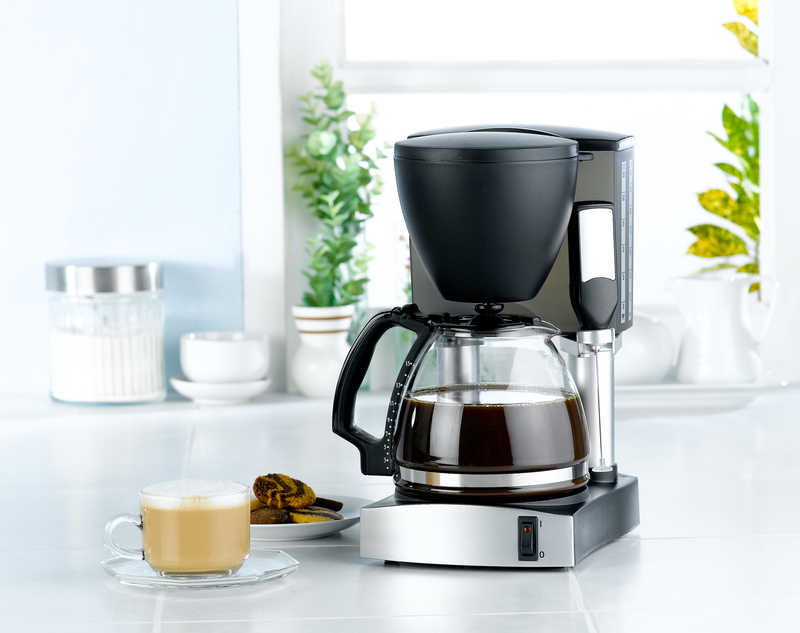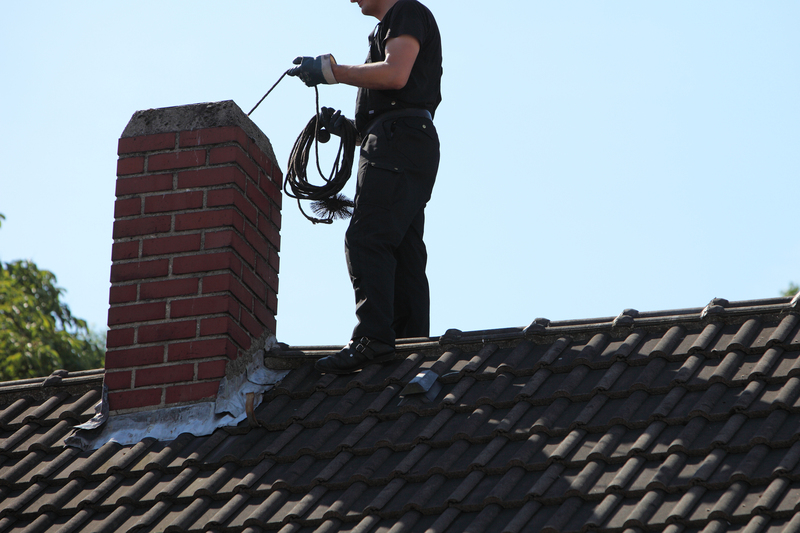Proven Tips to Keep Your Bathroom Mold-Free and Fresh
Posted on 01/09/2025
Proven Tips to Keep Your Bathroom Mold-Free and Fresh
A mold-free bathroom not only looks appealing but also fosters a healthier home environment. Bathrooms, with their high humidity and frequent moisture, are particularly prone to mold and mildew buildup, which can lead to health concerns and costly repairs. If you've ever asked, "How do I keep my bathroom free from mold?," you're in the right place. This comprehensive guide provides proven tips to ensure your bathroom remains both fresh and mold-free year-round.
Why Is Mold Such a Problem in Bathrooms?
Mold and mildew thrive in warm, damp places, which is exactly what most bathrooms provide. Persistent moisture from showers, baths, and even sinks creates the perfect breeding ground for various mold species. Bathrooms often have poor air circulation and may lack direct sunlight, further exacerbating the mold problem.
- Health Risks: Mold can aggravate allergies and asthma, and cause respiratory issues.
- Structural Damage: Prolonged mold exposure can harm paint, grout, drywall, and tiles.
- Unpleasant Odors: Mildew produces a musty smell that is difficult to mask.
Considering these factors, adopting a preventative approach is the best way to keep your bathroom clean, fresh, and healthy.

Top Tips to Keep Your Bathroom Mold-Free and Fresh
1. Improve Bathroom Ventilation
Proper airflow is the first line of defense against mold in bathrooms. Mold spores flourish in stagnant, humid air, so increasing air circulation is crucial.
- Install or Upgrade an Exhaust Fan: Use a high-quality exhaust fan, and run it during and after showers or baths for at least 15-20 minutes. Make sure the fan vents outside, not just into the attic.
- Open Windows and Doors: If your bathroom has a window, crack it open to create a cross-breeze. Leaving the bathroom door open can also help air out the space.
- Use a Dehumidifier: For bathrooms in particularly humid climates, a compact dehumidifier helps keep moisture levels in check.
2. Keep Surfaces Clean and Dry
One of the most important ways to prevent bathroom mold is to remove excess water promptly. Mold begins to grow within 24 to 48 hours of surface dampness.
- Wipe Down Wet Surfaces: After showers or baths, use a squeegee or towel to dry walls, glass doors, tiles, and the floor.
- Fix Leaks Promptly: Even small drips from faucets, pipes, or showerheads can create persistent moisture hotspots.
- Hang Up Towels and Mats: Never leave wet fabrics in a heap; hang them up so they dry quickly, reducing mildew risk.
3. Clean Regularly Using Mold-Inhibiting Products
Don't wait until you see mold to act. Regular cleaning using the right products makes a huge difference in maintaining a mold-resistant bathroom.
- Use Vinegar or Hydrogen Peroxide: These natural agents kill most mold spores. Spray directly on tiles, grout, and tubs, let sit for 10 minutes, then rinse.
- Commercial Mold Cleaners: There are effective mold and mildew removers available. Choose ones with EPA approval for bathroom use.
- Clean Grout and Corners: Use a soft brush and ensure all crevices, corners, and grout lines are scrubbed; these areas trap moisture most.
- Include Hard-to-Reach Areas: Don't forget under sinks, behind toilets, and around faucets.
4. Eliminate Clutter in the Bathroom
The more items you store in your shower and bathroom, the more places mold has to hide.
- Use Water-Resistant Storage: Opt for plastic or metal caddies instead of fabric or wood, which can harbor mold.
- Minimize Bottles and Extras: Only keep products you use often. Clear out old loofahs, razors, and unused bottles frequently.
A tidy, minimalistic approach reduces mold risk and makes cleaning faster and more effective.
5. Seal and Maintain Grout, Caulk, and Tiles
Cracked or missing grout and caulk create nooks where moisture can seep in and mold can take hold.
- Inspect Regularly: Look for cracks or gaps in grout and sealant around showers, bathtubs, and sinks at least twice a year.
- Routinely Re-Seal: Use a grout sealer or fresh caulk to keep seams waterproof. Most products recommend reapplication every 1-2 years.
- Replace Damaged Materials: Don't delay in repairing or replacing cracked tiles or mold-stained surfaces.
6. Launder Textiles Frequently
Shower curtains, bath mats, and towels are mold and mildew magnets if left damp.
- Choose Machine-Washable Options: Opt for items that can be easily laundered with hot water.
- Wash Weekly: Towels should be hung up to dry after every use and washed at least once a week. Bath mats and shower curtains should be laundered regularly as well.
- Replace When Needed: If mold or mildew stains persist, replace rather than keep using.
Advanced Strategies for a Mold-Free Bathroom Environment
Monitor and Control Humidity Levels
To prevent mildew and mold in bathrooms, it's essential to keep humidity below 50%. Use a hygrometer to monitor levels. If humidity is high, use ventilation, dehumidifiers, or an air conditioner.
Add Mold-Resistant Finishing Touches
For long-term mold prevention, consider these expert upgrades:
- Mold-Resistant Paints: Use special bathroom or anti-microbial paints on walls and ceilings.
- Mildew-Resistant Caulk and Grout: These products offer extra protection in vulnerable areas.
- Washable Wallpaper or Wall Panels: Vinyl wallpapers and smooth wall panels resist moisture and are easy to clean.
Opt for Regular Deep Cleaning
Once a month, do a deep clean of every bathroom surface. Move furniture, scrub under and behind toilets and sinks, and disinfect all fixtures. Don't forget to clean showerheads, faucet aerators, and vent covers, as they too can harbor mold over time.
Use Essential Oils for a Fresh Bathroom
A fresh bathroom not only looks but also smells clean. Essential oils such as tea tree, lavender, and eucalyptus are natural mold-fighters. Add a few drops to your cleaning solution or a diffuser for ongoing freshness and odor control.
The Best Routine: Daily, Weekly, and Monthly Mold Prevention Checklist
Daily Checklist
- Run the exhaust fan or open a window after every shower or bath
- Wipe down wet surfaces (walls, doors, floors) with a squeegee or towel
- Hang up towels and bath mats immediately
- Leave the shower curtain or door open after use for airflow
Weekly Checklist
- Clean tiles, grout, and corners with a mild, anti-mold cleanser
- Launder all bathroom textiles
- Declutter shower and countertop areas
- Check for leaks or standing water around fixtures
Monthly Checklist
- Inspect and reseal grout and caulk if needed
- Deep clean and disinfect entire bathroom, including hard-to-reach spots
- Wash or replace the shower curtain liner
- Vacuum and clean exhaust fan cover
- Monitor humidity levels and adjust accordingly
How to Tackle Existing Bathroom Mold Like a Pro
If mold does appear in your bathroom, act quickly to prevent it from spreading:
- Wear rubber gloves and a mask during mold cleanup.
- Use a mold-killing solution (commercial or homemade from 1 part bleach to 10 parts water) to scrub affected areas.
- Rinse thoroughly and dry all surfaces completely.
- Dispose of heavily moldy items (such as shower curtains or bath mats) that cannot be thoroughly cleaned.
- Address source issues (like leaks or ventilation problems) to keep mold from returning.
Tip: Always test cleaning products on a small area first, and ensure good ventilation when cleaning with strong chemicals.

Frequently Asked Questions about Bathroom Mold Prevention
How often should I clean my bathroom to prevent mold?
Aim for light cleaning daily (wiping surfaces and ventilating), deep cleaning weekly, and a more thorough inspection and cleaning monthly.
Is there a natural way to keep bathrooms free from mold?
Yes! White vinegar, hydrogen peroxide, baking soda, and essential oils are all effective, natural alternatives for keeping bathroom mold and odors at bay. Regular airflow and minimal humidity are also crucial.
What causes persistent mold even with regular cleaning?
Persistent mold usually indicates an ongoing moisture issue--think hidden leaks, poor ventilation, or inadequate drying. Address the underlying cause for true long-term results.
Final Thoughts: Create and Maintain a Mold-Free, Fresh Bathroom Today
Ensuring your bathroom stays mold-free and fresh is not difficult, but it does require diligence and a few simple lifestyle changes. By proactively managing moisture, cleaning regularly, minimizing clutter, and maintaining your bathroom's fixtures and textiles, you can say goodbye to musty odors and stubborn stains.
Start with just a few of these proven tips and gradually incorporate more for the best results. Remember: a clean, fresh bathroom is a healthier, happier space for you and your family.
- Boost ventilation to keep air fresh
- Clean surfaces and fix leaks immediately
- Regularly launder all bathroom textiles
- Declutter and use protective materials
- Monitor humidity and adjust as needed
With these sustainable changes, you'll enjoy a bright, healthy bathroom and stop mold before it starts. If you notice recurring problems, consider consulting a professional for an in-depth inspection. A little prevention goes a long way towards keeping your bathroom sparkling clean and smelling delightful!




